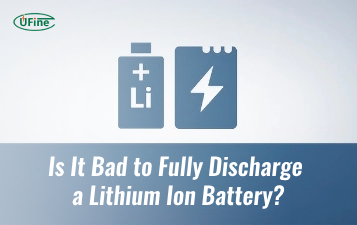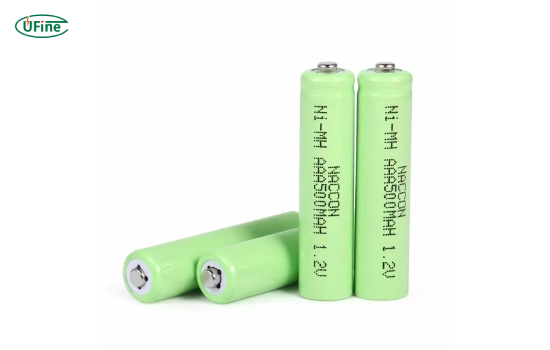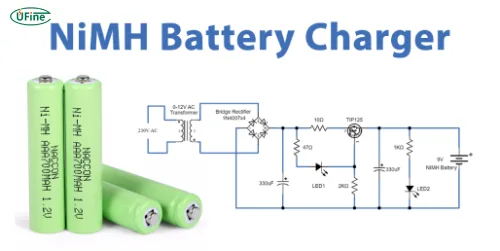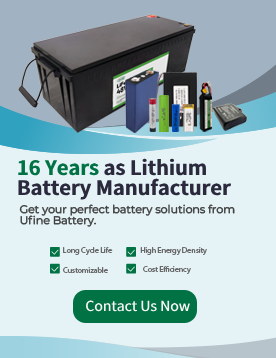
- Part 1. What is a hydride battery?
- Part 2. How hydride batteries work
- Part 3. Types of hydride batteries
- Part 4. Comparison: hydride battery vs. other battery technologies
- Part 5. Advantages of hydride batteries
- Part 6. Limitations of hydride batteries
- Part 7. Common applications of hydride batteries
- Part 8. How to maintain and extend the life of a hydride battery
- Part 9. The future of hydride battery technology
- Part 10. Hydride battery charger
- Part 10. Conclusion
- Part 11. FAQs
Part 1. What is a hydride battery?
A hydride battery, more formally known as a nickel-metal hydride (NiMH) battery, is a type of rechargeable battery that uses a metal hydride as the negative electrode (anode) and nickel oxyhydroxide as the positive electrode (cathode). It is part of the nickel-based battery family, succeeding the older nickel-cadmium (NiCd) technology with improved performance and reduced environmental impact.
Hydride batteries became popular in the 1990s, especially for portable electronic devices, hybrid vehicles, and renewable energy systems. Today, NiMH batteries remain widely used thanks to their stability, safety, and recyclability, even as lithium-ion batteries dominate certain high-energy markets.
Understanding hydride batteries is key to selecting the right energy storage solution, whether for consumer use, industrial applications, or electric mobility.
Part 2. How hydride batteries work
A hydride battery stores and releases electrical energy through a reversible electrochemical reaction between nickel oxyhydroxide and a metal hydride alloy. Let’s break down the main components and reactions:
Core Components:
- Positive electrode (cathode): Nickel oxyhydroxide (NiOOH)
- Negative electrode (anode): Metal hydride (MH)
- Electrolyte: Aqueous potassium hydroxide (KOH) solution
- Separator: A non-conductive membrane that allows ion flow but prevents electrical shorting
Learn About the Cathode and Anode of the Battery
Working Principle:
- During discharge, hydrogen ions from the metal hydride combine with hydroxide ions in the electrolyte to form water and release electrons:
MH+OH−→M+H2O+e−MH + OH^- → M + H_2O + e^-MH+OH−→M+H2O+e−
- At the cathode, nickel oxyhydroxide is reduced to nickel hydroxide:
NiOOH+H2O+e−→Ni(OH)2+OH−NiOOH + H_2O + e^- → Ni(OH)_2 + OH^-NiOOH+H2O+e−→Ni(OH)2+OH−
- During charging, the process reverses — the metal alloy reabsorbs hydrogen, and nickel hydroxide converts back to nickel oxyhydroxide.
This reversible hydrogen absorption mechanism gives hydride batteries a long cycle life and stable voltage output, making them reliable in both intermittent and continuous-use applications.
Part 3. Types of hydride batteries
While the term “hydride battery” often refers broadly to NiMH, there are several subtypes based on performance characteristics and applications.
(1) Standard NiMH Batteries
These are the most common type, offering high capacity and moderate self-discharge. They are widely used in digital cameras, toys, flashlights, and remote controls.
(2) Low Self-Discharge (LSD) NiMH
Also known as “ready-to-use” NiMH batteries, these hold most of their charge even after long storage periods — typically retaining 70–80% of capacity after a year. This makes them ideal for emergency equipment and infrequently used devices.
(3) High-Capacity NiMH
These are designed for maximum energy density, suitable for high-drain devices like power tools or electric shavers. However, they tend to have a shorter cycle life compared to LSD variants.
(4) Industrial and Automotive NiMH
Customized for hybrid and plug-in hybrid electric vehicles (HEVs/PHEVs), these cells are engineered for extreme temperature tolerance and deep discharge performance.
Part 4. Comparison: hydride battery vs. other battery technologies
Hydride batteries occupy a middle ground between older nickel-based batteries and newer lithium technologies. Here’s how they compare:
| Feature | NiMH (Hydride Battery) | NiCd | Lithium-ion |
|---|---|---|---|
| Energy Density | Medium (60–120 Wh/kg) | Low (45–80 Wh/kg) | High (150–250 Wh/kg) |
| Cycle Life | 500–1000 cycles | 1000+ | 300–1000 |
| Memory Effect | Minimal | Significant | None |
| Environmental Impact | Eco-friendly (no cadmium) | Toxic cadmium | Some recycling challenges |
| Cost | Moderate | Low | High |
| Safety | Very safe | Safe | Requires protection circuit |
In summary, NiMH hydride batteries provide an excellent balance between cost, safety, and sustainability, making them particularly attractive for automotive and consumer use where ultra-high energy density is not the top priority.
Part 5. Advantages of hydride batteries
Hydride batteries continue to thrive in a lithium-dominated market because of their unique strengths:
1. Eco-Friendly Composition:
They do not contain heavy metals like cadmium or lead, reducing toxic waste and simplifying recycling.
2. High Energy Density (Compared to NiCd):
NiMH cells offer about 30–50% higher capacity than comparable NiCd cells of the same size.
3. Good Safety Record:
No risk of thermal runaway or explosion, even under rough usage or overcharging conditions.
4. Wide Operating Temperature Range:
Hydride batteries maintain stable performance from -20°C to +60°C, making them suitable for automotive and outdoor applications.
5. Durability:
Capable of hundreds of charge-discharge cycles without significant capacity loss.
6. Cost-Effectiveness:
Less expensive than lithium-ion batteries for moderate energy requirements.
Part 6. Limitations of hydride batteries
Despite their advantages, hydride batteries have some inherent weaknesses that limit their application in high-performance or compact devices.
Self-Discharge Rate:
Traditional NiMH batteries can lose up to 20% of their charge within the first month, although modern LSD variants have mitigated this.
Energy Density:
Still lower than lithium-ion batteries, meaning larger and heavier cells for the same capacity.
Charging Sensitivity:
Overcharging can cause heating and pressure build-up, requiring intelligent charging systems.
Cycle Life Degradation:
Repeated deep discharge may lead to reduced capacity over time.
Lower Voltage per Cell:
At 1.2V nominal voltage per cell, they may require more cells in series to match lithium-ion packs.
Part 7. Common applications of hydride batteries
The hydride battery’s versatility has made it a mainstay across many industries:
Hybrid Electric Vehicles (HEVs)
Automakers like Toyota and Honda have used NiMH batteries in hybrid models (e.g., Prius, Insight) for decades due to their reliability, safety, and tolerance for high temperatures.
Consumer Electronics
Still found in devices like digital cameras, wireless keyboards, flashlights, and toys, hydride batteries are preferred by consumers seeking rechargeability without lithium’s volatility.
Medical and Industrial Equipment
Used in portable diagnostic tools, infusion pumps, and emergency lighting, where long-term stability is crucial.
Renewable Energy Storage
NiMH packs are sometimes employed in small-scale solar systems, thanks to their ability to handle temperature extremes and irregular charging.
Backup Power Systems
Emergency equipment and UPS systems often rely on NiMH for stable performance and low maintenance.
Part 8. How to maintain and extend the life of a hydride battery
Proper handling can greatly extend the lifespan and efficiency of hydride batteries. Here are best practices:
Use the Right Charger:
Always use a charger designed for NiMH batteries with automatic cutoff and temperature sensors.
Avoid Overcharging:
Continuous charging beyond full capacity can generate heat and reduce battery life.
Partial Discharge Is Fine:
Unlike NiCd, NiMH batteries do not suffer from a memory effect. Recharging before full discharge is acceptable.
Store Properly:
Store in a cool, dry place between 40–60% charge for long-term storage. Avoid high temperatures.
Regular Cycling:
If unused for months, perform one full charge/discharge cycle to keep the cells active.
Avoid Mixing Cells:
Always use batteries of the same brand, capacity, and age in multi-cell devices to ensure balanced performance.
Part 9. The future of hydride battery technology
Although lithium-ion dominates most markets today, NiMH hydride batteries continue to evolve and maintain relevance.
Research Directions:
- High-capacity alloys: Scientists are developing new AB5 and AB2-type alloys to increase hydrogen storage capability.
- Reduced self-discharge: Modern designs aim to retain charge for years, improving standby readiness.
- Eco-focused production: Manufacturers are refining processes to reduce rare-earth metal usage.
Sustainable Role:
Hydride batteries are expected to play a supporting role in grid balancing, hybrid vehicles, and power tools, especially in regions emphasizing recyclability and safety over raw performance.
With solid-state and hydrogen-based systems on the horizon, NiMH technology’s hydrogen storage mechanism could also inform next-generation fuel-cell batteries.
Part 10. Hydride battery charger
A hydride battery charger is specifically designed to recharge NiMH cells safely and efficiently. Using an incorrect charger can reduce lifespan or even damage the battery.
1 Working Principle
Hydride battery chargers operate by supplying a constant current until a specific voltage or temperature threshold is reached, then switching to trickle charge or stopping automatically.
Common detection methods include:
- ΔV (Delta-V) Detection: Stops charging when voltage drops slightly after reaching full capacity.
- Temperature Control: Uses thermistors to detect rising temperature — a sign the cell is full.
- Timer Control: Acts as a backup safety feature in case of detection failure.
2 Charging Recommendations
- Charge Rate: Typically 0.1C to 1C, where C is the rated capacity (e.g., 2000 mAh → 200 mA at 0.1C).
- Trickle Charging: Maintain charge at 0.03C for standby devices.
- Fast Charging: Use only smart chargers with automatic termination.
- Avoid Overnight Charging: Unless using an intelligent charger with overheat protection.
3 Choosing the Right Charger
When selecting a hydride battery charger:
- Ensure it explicitly supports NiMH chemistry.
- Look for individual channel monitoring (especially for AA/AAA chargers).
- Prefer chargers with LCD indicators, temperature sensors, and auto shutoff.
- Avoid using NiCd-only chargers — they lack proper termination control for NiMH cells.
4 Safety and Maintenance
Keep chargers clean and well-ventilated, and avoid using them in hot or humid environments. Regularly inspect contacts for corrosion to maintain efficient charging.
Part 10. Conclusion
Hydride batteries may not always make headlines in the lithium era, but their balance of safety, reliability, and sustainability keeps them indispensable across multiple industries. From hybrid vehicles to consumer electronics, NiMH hydride batteries remain a dependable energy solution — and with ongoing research into improved alloys and charging technologies, they will continue to play a key role in the global transition to cleaner energy systems.
Part 11. FAQs
Are hydride batteries rechargeable?
Yes. Hydride (NiMH) batteries are fully rechargeable and can typically endure 500–1000 charge cycles, depending on quality and usage habits.
Can I replace lithium-ion batteries with hydride batteries?
In most cases, no. Hydride batteries operate at 1.2V per cell, while lithium-ion cells are 3.6–3.7V, so they are not directly interchangeable unless the device supports multiple chemistries.
Why do hydride batteries get warm during charging?
Slight heating is normal because the charging process is exothermic. However, excessive heat indicates overcharging or a faulty charger.
How can I tell when a hydride battery needs replacement?
Signs include noticeably shorter runtime, slower charging, or increased heat during charge. After 2–3 years of regular use, replacement is usually necessary.
Are hydride batteries environmentally friendly?
Yes. They are free from cadmium and lead, making them non-toxic and recyclable. Many recycling programs recover nickel and rare-earth materials from old NiMH cells.
Related Tags:
More Articles

Is It Bad to Fully Discharge a Lithium Ion Battery?
Discover what happens if a lithium battery is fully discharged and how to safely recharge 12V batteries to prevent permanent damage.
Does a Higher mAh Battery Last Longer?
Does a higher mAh battery really last longer? Learn what mAh means, real battery life in hours, replacement safety (4000 vs 5000mAh), and real examples.
Exploring the Lithium Ion Battery Fire Temperature
Discover the lithium-ion battery fire temperature and learn how to stay safe. Get essential tips to prevent battery fires and protect your devices today.
The Ultimate Guide to 6s Lipo Batteries
A beginner-friendly guide to 6S LiPo batteries. Understand voltage, capacity, charging tips, safety rules, and real-world applications.
What is the NCMA battery? What is the difference between it and the NMC battery? Which one is better? This article will answer your questions.





